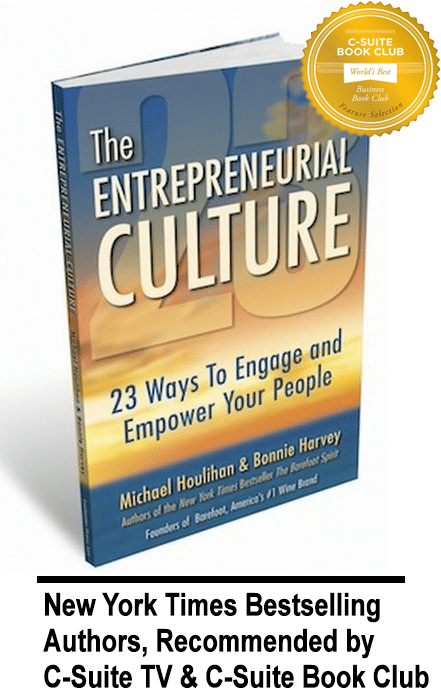Topics for M&B’s NTU talk, October 1, 2022
- 7 Commonly Held Misconceptions About Sales
- Climate Change Entrepreneurship
- Download PDFs
- Audiobook Free Chapter
- 7 Rules for Couples in Business
7 Commonly Held Misconceptions About Sales
1. “If you make a better mousetrap, they will beat a path to your door.”
- The end user is the “they” – or it could be the distributor, or retailer
- The 7 Sales** (foundational)
2. “My Product is so Good, it will sell itself!”
- Cornell Business master’s student business plan: “My product will be sold at retail.”
- Distribution is generally more important than the product
- You may have an excellent product, but if it’s not properly distributed then it will never get to the marketplace
3. “Sales just took off!”
- Just tell me the ONE thing? (cute logo, cute catchphrase, award-winning)
4. “Cutting sales costs will increase profits!”
- The 2-Division Company** (you are either in Sales or Sale Support)
- The customer can only give you 2 things: Money and Feedback
5. “In the name of efficiency, why don’t we just do it this way!”
- Middle managers are generally isolated and insulated from the field (marketplace)
- The person who knows “why we should not just do it that way” is the salesperson
6. “The economy doesn’t affect me; I’m in a B2B business.”
- B2B2B2C! (the “C” is the Client, Customer, or Consumer. The end-user.)
- If the “C” stops buying, its only a matter of time before the “B” stops buying
7. “The person I’m talking to is the decision maker”
- They can say no; they can’t say yes
- What they really want may be attention
- Job security may be more important to them than their company’s success
6 Commonly Held Misconceptions About Management
1. “The other guy (whom we are relying on) is going to do their job.”
- Needs an incentive beyond salary
- Exported wine shipped in temperature-controlled containers on the ship sat out in the open on the dock in Hong Kong and cooked.
2. “Just-In-Time Ordering is more efficient”
- The pandemic resulted in chaos and a supply crisis
- “Just in time ordering” allows no cushion for shortages, delays, or surges
3. “I’ve taken care of that; I have a call in…”
- The ball is always in your court/tennis racket – they may drop it!
- Don’t cause anxiety! Provide timely updates
4. “Making mistakes is BAD!”
- Never waste a perfectly good mistake!**
5. “People want to improve.”
- Just don’t ask me to change.
- I’m doing the best I can!
- Are you willing to improve?
6. “No means no.”
- The No Game
- Ask a different way, a different person, or a different day
- “She’s not Shopping!”
- The only one who can really say no is you, and that’s when you stop asking
CLIMATE CHANGE ENTREPRENEURSHIP
EXTREME WEATHER SURVIVAL PRODUCTS AND SERVICES
Climate change has created 2 increasing demands in the marketplace:
- Climate change mitigation AKA Green Technology
- Climate change survival
Entrepreneurs and investors who address these markets will find their goods and services in demand.
Mitigation: We recognize and encourage long-term solutions in Green Tech to mitigate the worst effects of climate change, including but not limited to Carbon sequestering products including technical process and bio sequestration (reforestation), carbon monoxide sequestration including oxidation of carbon monoxide, alternative energy production and distribution, wind, solar, hydro, tidal, hydrogen, etc., packaging solutions (eliminate single use plastics), agricultural solutions
Survival: There is an immediate and fast-growing demand for climate change survival products including, but not limited to:
Heat
- High-temperature clothing including, self-wicking fabrics, air conditioned suits, etc
- Sun and heat protection including, insulation, shade, convection design, environmentally safe air conditioning, temperature controlled automatic venting, etc
- Drought resistant horticulture including, low water food crops, fire-resistant landscaping, etc
Fire
- Home hardening including, ember protection products, window and screen protection, fireproof and fire resistant paints, fireproof and fire resistant siding, etc
- Quickly deployed emergency fire-proof tenting
- Subscription-based private fire protection services
- Inexpensive and efficient water pumps and water cannons including, automatic water spray systems, swimming pool water pumps, etc
- Air filtration systems including removal of smoke and air-borne hazardous materials
Energy
- Alternative energy including, more efficient solar, better storage batteries, more efficient and power saving appliances, electric vehicles and charging stations, wind and tidal generators, etc
Flood
- Flood water mitigation products including, emergency flotation equipment, inflatable escape vessels, water intrusion prevention devices, etc
- Sea level rise mitigation products including, dikes, jacking systems, etc
Evacuation
- Emergency evacuation equipment and supplies including, grab-and-go survival packs, ready-to-eat meals, batteries and mobile solar recharging stations, tents, water purification, etc
Water
- Inexpensive water collection and storage products including, water collection and storage products, low and no water toilets, gray water collection and reuse systems, etc
Wind
- Wind damage mitigation products including, better foundation and roof anchors, wind protection devices, etc
Software
- Better software and platforms to notify residents of emergencies and to notify government agencies about privately held firefighting and other mitigation assets, including, notification of floods, fires, heat, and wind events, their proximity, direction, and estimated time of arrival along with consolidated information on evacuation zones, power outages, wind directions, weather forecasts, as well as portals to allow uploading of critical information.
Documents
- Easy to use, off-premise, secure document storage for banking, insurance, appraisals, auto, deeds, will, powers of attorney, passwords, photos, medical histories, etc
Download PDFs
- Worthy Cause Marketing
- Make Mistakes Write
- Pyramid vs. Two Division Company
- Two Division Company
- The Money Map
- The Seven Levels of Sales
Audiobook Free Chapter
7 Rules for Couples in Business
DON’T TRY THIS AT HOME!
 “There are 5.5 million family owned businesses in the US. They generate 57% of our nation’s GDP. They employ 63% of the workforce, and they create 75% of all new jobs,” according to Sheila Neisler of Catalyst Marketing Company, specializing in helping family owned businesses.
“There are 5.5 million family owned businesses in the US. They generate 57% of our nation’s GDP. They employ 63% of the workforce, and they create 75% of all new jobs,” according to Sheila Neisler of Catalyst Marketing Company, specializing in helping family owned businesses.
Last week we were the guest speakers for the Family Business Forum in Asheville, North Carolina. The attendees were keen on hearing our secrets to maintaining a healthy relationship as both life and business partners. Here is what we shared with them:
- Different Skill Sets. Ideally you should have different skill sets so you don’t compete. Then respect the other person’s skill set and know that it is essential to your success. Having the same skill set as your partner can lead to competition and friction.
- Positive Disagreement. When you know that the other person has your and your company’s best interests at heart, it’s easier to disagree without all the emotional reactions that can lead to arguments. Disagreements can be very beneficial to success. Hearing another side from a person you trust and respect can open your eyes to alternatives and compromises you may have otherwise overlooked.
- No Micro Management. Give your partner the freedom to perform his/her job unfettered. Trust that they know their stuff and that they feel the same about you. Sometimes you have to bite your tongue and not be a back seat driver. Micro managing can cause hard feelings and reduce the other person’s ability to perform the very job you have entrusted them to do.
- Unanimous Decisions. If you can’t agree, don’t do it. Avoid those “I told you so” hard feelings down the road. Sometimes it’s wiser to put off a difficult decision until both of you agree. We had a board of directors made up of four people, an even number. Plus it was two women and two men. All decisions were unanimous. If three couldn’t convince one, we didn’t do it!
- Third Party Experts. Often neither one of you will know the best decision. That’s the time to bring in a third party expert. If you still disagree, bring in another, and another, until you both agree. One of the biggest mistakes family businesses make is too often they think that they have all the skill sets they need in house. Do what you do best and delegate the rest.
- Separate Offices. It’s important to give your partner their own work space, physically separated from yours. This will make them feel less scrutinized and prevent you both from interrupting each other’s work just because you both are so close and convenient.
- Off-Limits Times and Spaces. Designate certain places in your home where you both agree business will not be discussed. This is especially appropriate for the bedroom. Separate business from romance. Also it helps to have rules to avoid business discussions during meals, even if it is only during dinner. Make Sundays free of work related topics. Buy some non-refundable tickets at the beginning of the year for a vacation from business, preferably to somewhere romantic!
It’s not easy working as a couple. In fact when we speak about this subject, we start our talk with, “Don’t try this at home!” Very few couples can sustain a romantic and a business relationship at the same time. For most, it’s better to work at different businesses and have a romantic relationship free of business challenges.
However, with that said, running a business together can be very rewarding. But it requires a level of mutual respect, common business goals, and disciplined adherence to some practical rules like these.






